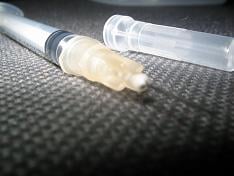H1N1 Pandemic Vaccines – GlaxoSmithKline’s Pandemrix-Associated Narcolepsy Risk: Study
Antigenic Differences between AS03 Adjuvanted Influenza A (H1N1) Pandemic Vaccines: Implications for Pandemrix-Associated Narcolepsy Risk

Abstract
Background
Narcolepsy results from immune-mediated destruction of hypocretin secreting neurons in hypothalamus, however the triggers and disease mechanisms are poorly understood. Vaccine-attributable risk of narcolepsy reported so far with the AS03 adjuvanted H1N1 vaccination Pandemrix has been manifold compared to the AS03 adjuvanted Arepanrix, which contained differently produced H1N1 viral antigen preparation. Hence, antigenic differences and antibody response to these vaccines were investigated.
Methods and Findings
Increased circulating IgG-antibody levels to Pandemrix H1N1 antigen were found in 47 children with Pandemrix-associated narcolepsy when compared to 57 healthy children vaccinated with Pandemrix. H1N1 antigen of Arepanrix inhibited poorly these antibodies indicating antigenic difference between Arepanrix and Pandemrix. High-resolution gel electrophoresis quantitation and mass spectrometry identification analyses revealed higher amounts of structurally altered viral nucleoprotein (NP) in Pandemrix. Increased antibody levels to hemagglutinin (HA) and NP, particularly to detergent treated NP, was seen in narcolepsy. Higher levels of antibodies to NP were found in children with DQB1*06:02 risk allele and in DQB1*06:02 transgenic mice immunized with Pandemrix when compared to controls.
Conclusions
This work identified 1) higher amounts of structurally altered viral NP in Pandemrix than in Arepanrix, 2) detergent-induced antigenic changes of viral NP, that are recognized by antibodies from children with narcolepsy, and 3) increased antibody response to NP in association of DQB1*06:02 risk allele of narcolepsy. These findings provide a link between Pandemrix and narcolepsy. Although detailed mechanisms of Pandemrix in narcolepsy remain elusive, our results move the focus from adjuvant(s) onto the H1N1 viral proteins.
Click here for the full study and the list of authors.

